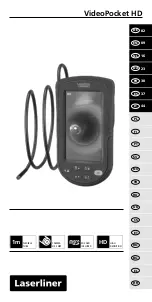
12
P5210 Instructions
Operating Basics
To help you use the P5210 High-Voltage Differential Probe safely
and effectively, this section provides important information about
safety limits, operating characteristics, and probing techniques.
Operating the Probe Safely
Before connecting the inputs of the probe to a circuit, read the safety
information in this section and attach the appropriate accessories to
the input connectors of the probe.
NOTE
. To avoid shock or fire hazard, use only accessories that are
rated for the application.
Minimizing Risk of RF Burn (probe leads)
WARNING.
To avoid personal injury, do not handle the probe leads
when the leads are connected to a source that is above the voltage
and frequency limits given in Figure 2 on page 13. The area above
these limits poses a risk of radio frequency (RF) burns.
If you need to use the probe within the risk area for RF burn, turn
power off to the source before connecting or disconnecting the probe
leads. Do not handle the input leads while the circuit is active.
Maximum Input Limits
To prevent damage to the probe, you must observe both the peak and
RMS ratings. (The rating for DC voltage is the same as the rating for
RMS voltage.) You must also observe the ratings between the
differential inputs and between each input and earth ground.
Содержание P5210
Страница 1: ...Instructions P5210 High Voltage Differential Probe 070 9841 00 1 ...
Страница 7: ...Getting Started P5210 Instructions 5 Figure 1 P5210 High Voltage Differential Probe ...
Страница 27: ......
Страница 28: ......
Страница 29: ...Instructions Sonde différentielle haute tension P5210 070 9841 00 2 ...
Страница 36: ...Mise en route 6 Instructions pour la sonde P5210 Figure 1 P5210 Sonde différentielle haute tension ...
Страница 57: ...Anleitung P5210 Hochspannungs Differentialtastkopf 070 9841 00 3 ...
Страница 64: ...Zu Beginn 6 P5210 Anleitung Abbildung 1 P5210 Hochspannungs Differentialtastkopf ...















































